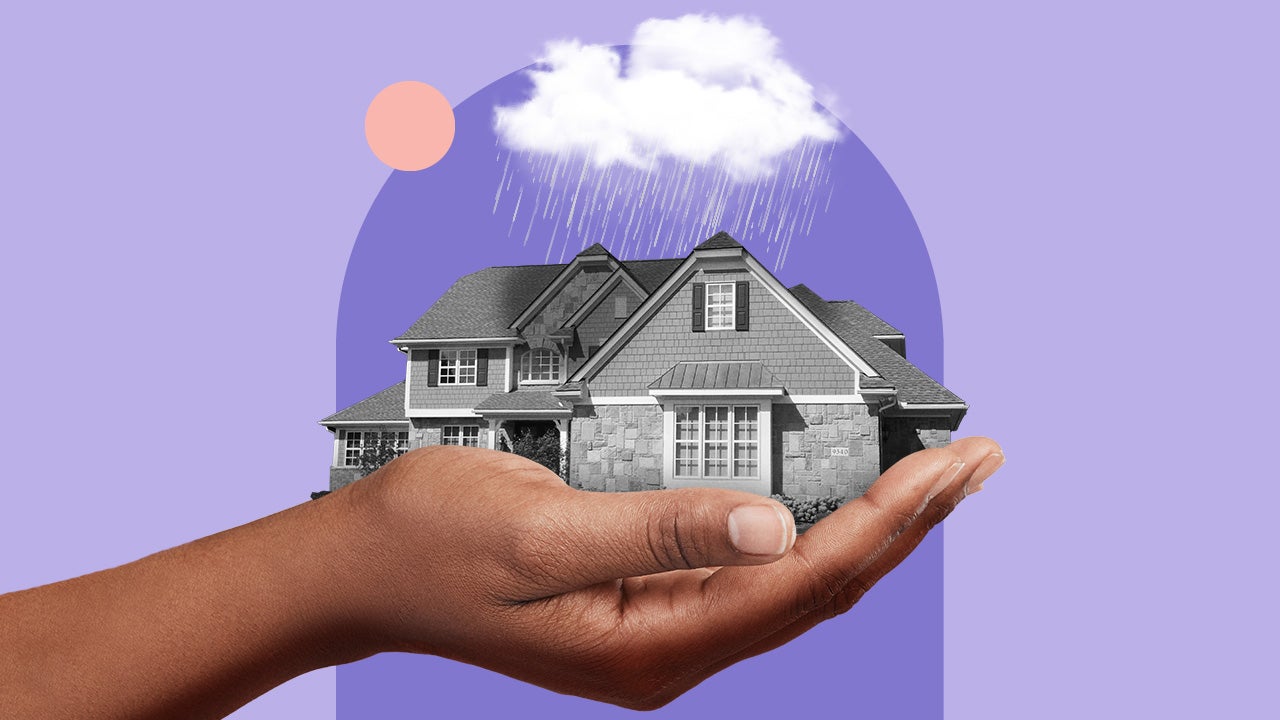Will a ‘silver tsunami’ solve the U.S. housing shortage?

Key takeaways
- There's a housing shortage in the U.S., with more demand for homes than there is supply of available inventory.
- The 'silver tsunami' theory suggests that as older homeowners downsize or pass away, an influx of their homes will hit the market and help alleviate the shortage.
- However, many older homeowners are choosing to invest in upgrades and stay in their homes rather than move.
If you’re thinking about trying to buy a home, you’re probably wondering why housing prices are so high. While there are a lot of factors that impact local real estate prices, a large part of the answer is due to a fundamental law of economics: There isn’t enough supply to meet demand.
Can the imbalance be solved by time? More than half of homes in the U.S. are owned by people age 55 or older, according to an analysis of U.S. Census Bureau data by Construction Coverage, and a 2023 National Association of Realtors survey found that the typical home seller’s age was 60. One theory reasons that, as these homeowners get older and eventually downsize or pass away, an influx of their homes will hit the market — giving the real estate market a much-needed boost in inventory. Is this “silver tsunami” of housing supply really on the way? And will it solve the housing shortage? Let’s break down the possibility.
Is a silver tsunami coming for the housing market?
If you’re unfamiliar with the concept of a silver tsunami, it’s something that plenty of housing market analysts have talked about for the past few years in discussions about the housing shortage. The idea is pretty straightforward: As older homeowners — the ones with silver hair — opt to downsize and/or pass away, a flood of newly available homes will hit the market. However, don’t expect that flood to materialize anytime soon, says Mark Hamrick, Bankrate’s senior economic analyst.
I’m skeptical that there will be a tsunami of homes hitting the market.— Mark Hamrick, Bankrate Senior Economic Analyst
“I’m a little skeptical that there will be a ‘tsunami’ of homes hitting the market,” Hamrick says. “A lot of current homeowners, including those who have been in their homes for a long time, have used the last several years to improve the quality of their spaces. That lets them enjoy the home more.”
Even if selling is on the horizon, the timeline for a sale may be a long way off for a lot of people. As Hamrick points out, those upgrades can contribute to the lock-in effect: If an older homeowner loves where they live and is enjoying a mortgage with a rate of 4 percent or even lower, there is less incentive to move.
And there’s no guarantee that older homeowners will want to shrink their living space or leave their longtime home, even if their mortgage is fully paid off. Recent research from Redfin found that 78 percent of Baby Boomers plan to remain in their homes as they age. If those plans hold true, the housing market can expect more of a passing rain shower than a tsunami.
Would a silver tsunami help first-time homebuyers?
While the Baby Boomers who do sell will certainly free up some housing supply, don’t expect it to be the type of home that most young and first-time buyers are looking for. Style preferences evolve: Young buyers are unlikely to find open floor plans or eco-friendly enhancements in properties that have had the same owner for 30 years or more.
However, Angie Hicks, cofounder of Angi (formerly Angie’s List), points out that many older homeowners have actually spent plenty of cash to keep their homes in good condition. “Baby Boomers continue to invest in their homes despite the assumption that their houses could be dated,” Hicks says. “According to Angi’s [most recent] State of Home Spending report, Baby Boomers spent around $7,600 on home improvement, around $1,000 on home emergencies and around $1,250 on maintenance in 2023.”
It’s a lower amount compared with younger homeowners — Millennials spent the most, according to the report. But it is a positive signal that if you can afford to buy that massive five-bedroom home built in 1970, it might not look like it’s still stuck in the ’70s.
Unfortunately, though, these properties are not likely to have starter-home price tags. The reality is that most first-time buyers aren’t going to be able to buy a huge place; they’re too expensive. That, Hamrick said, could lead to a potential ripple effect: If downsizing seniors move into smaller, multifamily units, it will further limit the inventory of those more-affordable homes for buyers on smaller budgets.
“As long as someone is alive, they need to live somewhere,” Hamrick says. “They’ll be trading one form of housing for another.”
Some markets will see more impact than others
Real estate is a very localized industry, which means that a potential generational shift in homes for sale will look a lot different depending on where you’re looking to buy. Consider Sumter County, Florida, near the Tampa and Orlando areas, where more than 57 percent of the population is at least 65 years old, according to data from the Census Bureau. This part of the country, along with other popular destinations for retirees, will inevitably be reshaped by an aging population.
Similarly, affluent areas with big, expensive homes may evolve if fewer and fewer people can afford to buy them when they become available. Properties may sit on the market for a long time before finding a qualified buyer, especially if mortgage rates remain high, creating half-empty neighborhoods that were once bustling with life.
On the other hand, markets that are wildly popular with younger homebuyers, like Austin and Denver, may not be affected at all. And if you’re waiting for a silver tsunami to free up inventory in Salt Lake City or any other desirable parts of Utah, you’re going to be waiting a long time: The state has a median age of about 31, making it the youngest state in the country.
Money-saving tips for homebuyers
Will the silver tsunami ever materialize in a meaningful way? Only time will tell. And while you can’t control what Baby Boomers plan to do with their properties, you can take steps to increase your odds of success in finding a home that fits your budget. Before you start house-hunting, think about these tips:
- Consider a smaller space: Condos and townhouses offer the chance to begin building equity without the bigger expense of a freestanding single-family home. March data from the National Association of Realtors shows that median sale prices for condos and co-ops were about $40,000 cheaper than single-family properties.
- Scrutinize HOA fees: One downside to condos, however, is that you’ll likely need to pay HOA fees. Make sure you understand what you’re getting for the cost: You might pay hundreds of dollars but get a doorman, a gym, a pool and loads of other benefits that will make the expense worth it. But if you won’t use the perks, don’t waste your money.
- Look outside of metro areas: Builders have been ramping up production, lowering price points and providing more incentives, such as rate buydowns, to motivate buyers. However, most of the new construction isn’t occurring in city centers. “New supply tends to happen in the suburbs and exurbs,” Hamrick says. These locations can be particularly appealing if you have the freedom to work from home and don’t have to commute to a downtown office.
- Don’t skip the home inspection: If you’re considering a home being sold by owners who were there a long time, Hicks stresses the importance of a professional home inspection. “A detailed inspection report that notes some potential problem areas with the home can actually help you negotiate a lower price on the property,” she notes.
- Search for down payment assistance: If you’re a first-time buyer or have a modest income, you may qualify for some help. State and local governments often have down payment assistance programs that can help you save for a down payment and reduce the amount you need to shell out upfront.
- Shop around for a lender: Your monthly mortgage payment is going to be with you for a long time — potentially 30 years. So it’s critical to compare offers from multiple lenders and see who can offer you the best deal. Look for both a low rate, which will save you money in the long run on interest, and low upfront fees to reduce your closing costs.







